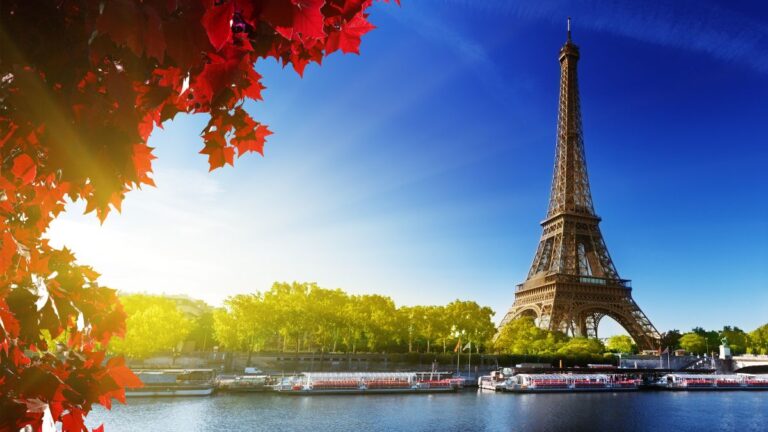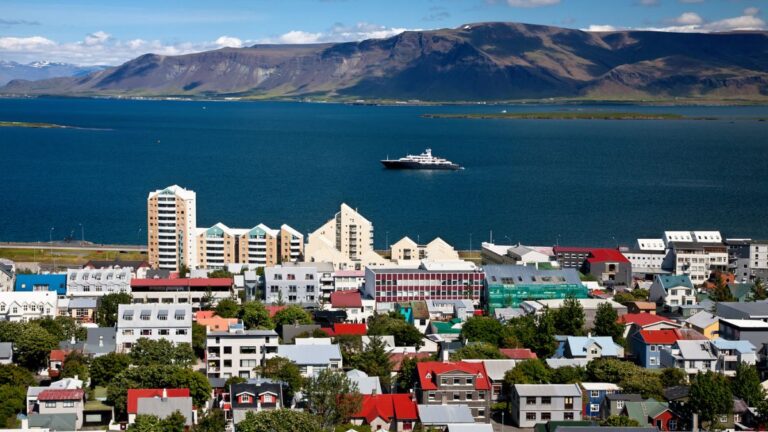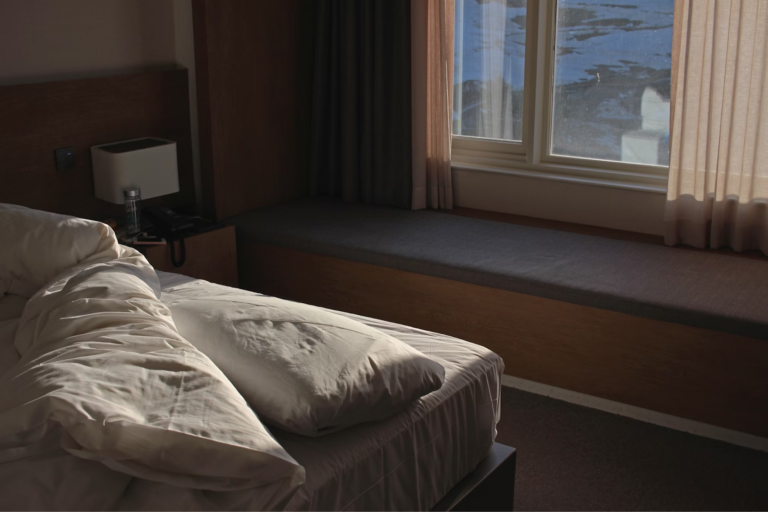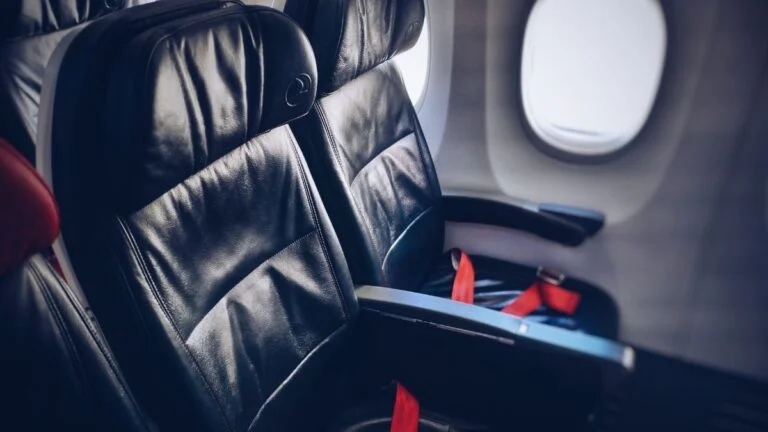Worst Time to Visit the Philippines: Navigating Typhoon Seasons and Tourist Surges
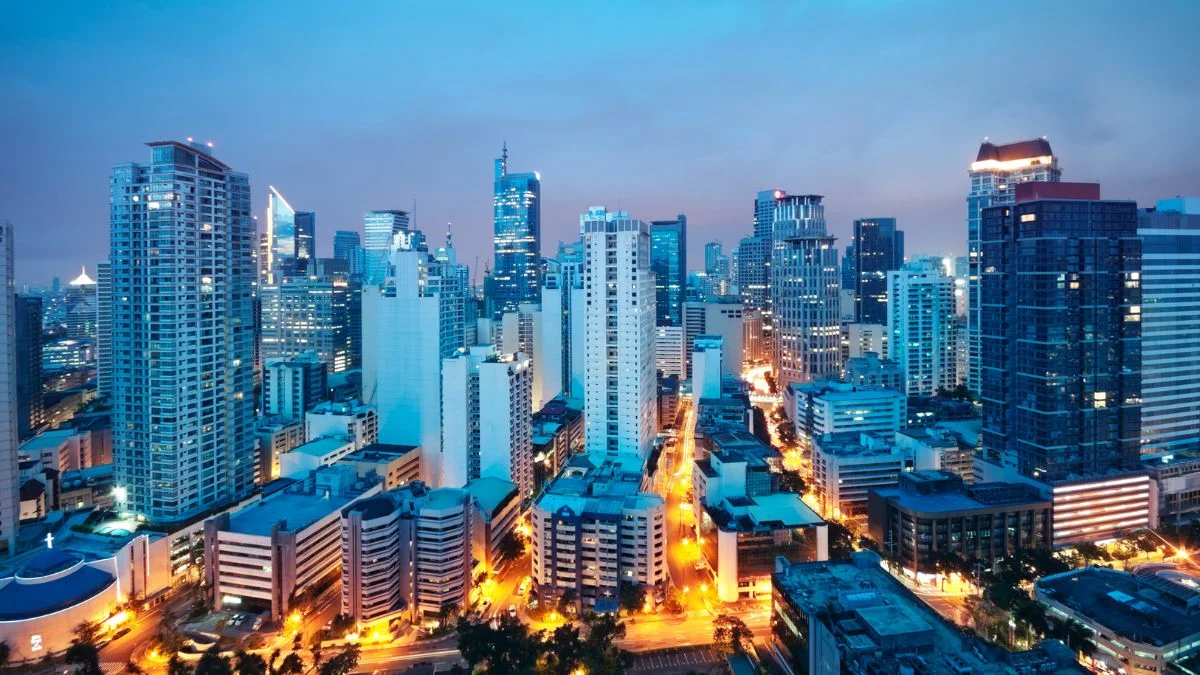
As participants in Amazon Associates and other programs, we earn from qualifying purchases. This comes at no additional cost to you. For more details, see our Affiliate Disclosure.
When planning a trip to the Philippines, a tropical paradise renowned for its pristine beaches and vibrant culture, it’s vital to consider both the natural and human factors that could impact your experience. While the allure of the archipelago beckons travelers year-round, there are distinct periods when visiting might be less than ideal. From the unpredictable typhoon seasons to waves of tourists, this article aims to guide you through the times when you might want to reconsider your travel plans.
HIGHLIGHTS
- Typhoon season, particularly from June to October, is a high-risk period for travel due to severe weather.
- Peak tourist months, especially December and the summer months of March to May, witness overwhelming crowds.
- Regional variations can intensify these challenges, with Luzon, for instance, being more susceptible to typhoons.
- Major local festivals and events draw massive crowds, potentially overcrowding certain destinations.
Understanding the Philippines’ Typhoon Seasons
The Philippines, being an archipelago situated in the western Pacific, is prone to typhoons—powerful tropical cyclones that bring heavy rainfall and strong winds. On average, the country is visited by about 20 typhoons annually, but not all of them make landfall. Here’s what you need to understand about the typhoon seasons if you’re considering a trip to this tropical paradise:
Timeline: The typhoon season typically runs from June to November, with the peak months being August and September. However, typhoons can occur outside these months, so always keep an eye on the weather forecast.
Intensity and Frequency: Not all typhoons are catastrophic. They range from weaker tropical depressions to severe super typhoons. The intensity and path can be unpredictable, but historically, the northern parts of the country, including Luzon, tend to be more affected than regions such as the Visayas and Mindanao.
Travel Disruptions: Typhoons can lead to canceled flights, ferry disruptions, and inaccessible roads, making travel both inconvenient and potentially dangerous. Popular tourist destinations, such as Boracay or Palawan, can become isolated during severe weather events.
Safety Concerns: Beyond travel inconvenience, typhoons can cause flooding, landslides, and other hazards, especially in areas with poor infrastructure or those situated in low-lying regions.
Local Responses: The Philippine government and local communities are accustomed to handling typhoons. Systems are in place for early warnings, evacuations, and post-storm responses. As a traveler, it’s essential to follow local advisories and stay updated through official channels.
Positive Aspects: Despite the challenges, the rainy season can also be a time of rejuvenation for the landscape, with lush greenery and cooler temperatures. Some travelers even prefer this period for the refreshing atmosphere it offers, provided they’re prepared for potential weather-related issues.
While the Philippines remains a captivating destination year-round, understanding its typhoon seasons is crucial for any traveler. By being informed and flexible, one can navigate the challenges and maximize their experience in this beautiful country.
The Peak Tourist Months: When Crowds Converge
The Philippines, with its powdery white beaches, azure waters, and rich cultural heritage, has unsurprisingly become a top travel destination in Southeast Asia. Just as the country has its typhoon seasons, there are certain months when an influx of tourists can be observed, significantly transforming the local experience.
Knowing these peak months is vital for those who want to escape the bustling crowds and make the most out of their visit.
Holiday Rush: December and January are particularly crowded. With Christmas and the New Year being widely celebrated, both local and international tourists flock to key destinations for festivities and vacations. This also coincides with cooler temperatures, making it an attractive period for many.
Summer Surge: March to May marks the summer season in the Philippines. During these months, the sun is out, schools are on break, and many Filipinos take this opportunity to hit the beaches and resorts. Popular spots like Boracay, Siargao, and El Nido can get particularly congested.
International Tourist Trends: Apart from local vacationers, the Philippines receives a significant number of foreign tourists. Data shows that the first quarter of the year—especially February to April—is a peak period for international arrivals.
Major Events and Festivals: January sees events like the Sinulog Festival in Cebu and the Ati-Atihan in Kalibo, drawing in large crowds. Other months have their own regional festivities, making certain areas busier than usual.
Impact on Prices and Availability: Peak months often mean higher prices, especially for accommodations and domestic flights. It’s also common to find top attractions and activities being fully booked, so planning ahead becomes essential.
Local Perspective: While tourism is a significant economic driver for many communities, the sudden surge can strain local resources and alter the authentic vibe of places. Over-tourism has been a concern in some regions, leading to periodic closures and rehabilitation efforts.
Navigating the Crowds: If you find yourself traveling during peak months, aim for off-the-beaten-path destinations, book your accommodations and tours in advance, and consider early morning visits to major attractions to avoid large gatherings.
While the peak tourist months showcase the Philippines in all its sun-soaked glory, it’s essential to weigh the experience of crowded venues against the serene beauty of a more secluded, intimate encounter with the islands. Adjusting your itinerary with these considerations in mind can profoundly influence your overall experience.
Balancing Weather and Crowds: The Complicated Months
Traveling to the Philippines requires a fine balancing act between avoiding typhoon seasons and sidestepping the tourist surges. There are certain months where the lines blur, presenting travelers with the challenge of unpredictable weather paired with variable crowd sizes. These “complicated months” can still offer a fulfilling travel experience, provided you arm yourself with knowledge and a flexible mindset.
Transitional Periods
February and November are often seen as transitional months. February sits between the holiday rush and the onset of summer, while November marks the tail end of the typhoon season and precedes the holiday festivities. These months can bring mild weather, but there’s always the unpredictability factor.
Pros of the Off-Peak
Venturing out during these months can yield benefits like discounted accommodations, fewer crowds at major tourist sites, and a more relaxed atmosphere. You’ll also witness the Philippines in a more natural state, sans the heavy commercialization evident during peak periods.
Weather’s Wild Card
While typhoons are less frequent outside of the core typhoon season, they’re not unheard of. February might surprise with an occasional drizzle or a storm, and November, being at the tail end of the typhoon calendar, can sometimes usher in unexpected rainy spells.
Regional Differences Matter
The Philippines is an archipelago of over 7,000 islands. Weather conditions can vary drastically between regions. While Luzon might be experiencing rain, Visayas and Mindanao could be basking in sunshine. Understanding regional climate variations can help travelers pick suitable destinations during these months.
Flexibility is Key
If you’re traveling during these complicated months, a flexible itinerary can work wonders. Monitor weather updates and be open to changing plans if necessary. This might mean swapping a beach day for a cultural city tour or shifting your travel base to a different island altogether.
Engaging Locals
Locals have a keen understanding of their environment. Engage with them to gain insights on the best spots to visit during uncertain weather or to identify lesser-known attractions that aren’t heavily impacted by the occasional tourist influx.
The “complicated months” in the Philippines are akin to a box of assorted chocolates—you never truly know what you’re going to get. Yet, with the right perspective, these months can offer the perfect blend of adventure, relaxation, and cultural immersion, without the extremes of typhoons or overflowing crowds.
Popular Festivals and Events: Drawing Crowds Like No Other
The Philippines, with its vibrant blend of indigenous, Spanish, and other cultural influences, is a treasure trove of festivals and events. These celebrations, rooted in religious beliefs, historical events, or local traditions, can transform even the most serene towns into hubs of festivity and excitement. While they offer an unparalleled immersion into Filipino culture, they also draw massive crowds, both local and international. Here’s a deep dive into some of these festivals and what to expect:
Sinulog Festival (Cebu) – January: A colorful, grand event held in honor of the Santo Niño, or the child Jesus. Dancers in bright costumes fill the streets, moving to rhythmic drum beats. The festival culminates in a grand parade, with participants from various regions showcasing their unique performances.
Ati-Atihan (Kalibo, Aklan) – January: Often dubbed the “Mother of All Philippine Festivals,” this event celebrates both the Santo Niño and the history of Malay settlers, with participants painting their faces in black and donning indigenous garb.
Panagbenga Festival (Baguio) – February: This “Flower Festival” celebrates the bloom season in Baguio, the summer capital. Expect a grand float parade adorned with fresh flowers, street dancing, and vibrant displays all around.
Pahiyas Festival (Lucban, Quezon) – May: A thanksgiving festival for a bountiful harvest, houses are adorned with colorful and creative displays made from rice, fruits, vegetables, and other agricultural produce.
Kadayawan Festival (Davao) – August: Celebrated to give thanks for life, nature, and abundant harvest, this event features a range of activities from tribal performances to street parades showcasing the region’s rich indigenous culture.
MassKara Festival (Bacolod) – October: Born out of a need to uplift spirits during a time of crisis, this “festival of smiles” is characterized by dancers wearing masks with radiant smiles, reflecting the city’s spirit of resilience and positivity.
Navigating Festival Crowds: Due to the sheer popularity of these events, accommodations can be booked solid months in advance, and prices generally surge. Public transport becomes crowded, and streets, especially those in parade routes, are often cordoned off.
Benefits of Festival Visits: Beyond the challenges, attending these festivals can offer once-in-a-lifetime experiences. They provide deep insights into local traditions, beliefs, and the Filipino spirit of celebration. Plus, they’re a visual and sensory treat, with music, dance, food, and crafts in abundance.
The festivals of the Philippines are a double-edged sword. While they draw crowds like no other, potentially leading to inconvenience, they also present an unparalleled opportunity to delve deep into the heart and soul of Filipino culture. For the intrepid traveler, these events can be the highlight of their Philippine journey, a vibrant testament to the archipelago’s rich tapestry of traditions.
Regional Variations: Not All Islands are Created Equal
The Philippines, with its sprawling archipelago of over 7,000 islands, presents a diverse travel palette. Each island, or cluster of islands, possesses its own unique charm, cultural nuances, and climatic conditions. While it’s tempting to paint the Philippines with a broad brushstroke, understanding these regional variations can greatly enrich one’s travel experience and help in making informed decisions. Here’s a closer look at the differences between some of the main regions:
Luzon
- Climate: Being in the northern part of the Philippines, Luzon experiences pronounced wet and dry seasons. The region is also more susceptible to typhoons.
- Cultural Highlights: The bustling metropolis of Manila, historical sites like Intramuros, the cool highlands of Baguio, and the famed Banaue Rice Terraces showcase Luzon’s multifaceted appeal.
Visayas
- Climate: Central in location, the Visayas has a tropical climate, less affected by typhoons than Luzon but can still experience them.
- Cultural Highlights: From the white beaches of Boracay to the historical significance of Cebu and the diving haven of Bohol, Visayas offers a mix of natural beauty and cultural richness.
Mindanao
- Climate: Mindanao has a generally equatorial climate, which means rain can occur at any time, but it’s less affected by typhoons than the other two regions.
- Cultural Highlights: Davao’s vibrant Kadayawan Festival, the pristine beaches of Siargao, and the cultural tapestry of the indigenous tribes make Mindanao a must-visit. However, travelers should also be mindful of certain areas due to ongoing conflicts and advisories.
Palawan
- Climate: Often considered its own region due to its unique location, Palawan has a mix of microclimates, but is generally tropical. It can, however, experience occasional storms.
- Cultural Highlights: The Underground River in Puerto Princesa, the luxury resorts and lagoons of El Nido, and the biodiversity of Coron make Palawan a top choice for many travelers.
Travel Considerations by Region
- Infrastructure and Accessibility: While major islands like Luzon and parts of Visayas have robust infrastructures, some remote islands might have limited facilities and harder accessibility.
- Local Customs: Each region has its own set of customs, dialects, and cuisines. For instance, while Tagalog might be understood widely, Cebuano is the primary language in the Visayas.
Safety and Regional Sensitivities
It’s always recommended to check the latest travel advisories, especially when considering areas in Mindanao. Respect for local customs and traditions is paramount across all regions.
The Philippine archipelago is a mosaic of diverse experiences waiting to be explored. Recognizing the distinctiveness of each region not only helps in planning a well-rounded trip but also opens doors to deeper connections, enriching stories, and unforgettable memories.
Whether you’re chasing adventures, cultural immersion, or simply relaxation, understanding these regional variations ensures that you’ll find an island—or many—that’s just right for you.
Making the Most Out of Off-Peak Visits
Traveling to the Philippines during off-peak months has its own unique charm and set of advantages. While many tourists flock to its shores during the popular months, venturing out when the crowds have thinned allows for a more intimate experience of this captivating archipelago.
Firstly, one of the most evident benefits of off-peak travel is cost savings. Accommodations, flights, and even some tours or activities often offer discounted rates. This is particularly beneficial for budget travelers or those who enjoy indulging in luxury stays without the hefty price tag.
Furthermore, fewer tourists mean that popular destinations, which are typically brimming with visitors, become more serene and accessible. Imagine having a pristine beach almost to yourself, or visiting an attraction without having to navigate through throngs of people. This not only enhances the overall experience but allows for better photography opportunities and unhurried exploration.
Additionally, off-peak doesn’t necessarily mean bad weather. The Philippines, being tropical, still offers plenty of sun-drenched days outside of the peak seasons. There’s also a certain beauty in witnessing the islands during their more temperate days; the landscapes become lusher, waterfalls might be more robust, and the cooler climate can be a pleasant respite.
However, it’s also essential to approach off-peak travel with a degree of flexibility. Unexpected rains might require a change in plans or activities. This is when immersing oneself in indoor or cultural activities, such as visiting museums, attending local workshops, or indulging in the diverse Filipino cuisine, can come to the forefront of the travel experience.
Tips for Traveling During Typhoon Seasons
Traveling during the typhoon season in the Philippines can be a daunting prospect for many. However, with careful planning and a dash of flexibility, it’s entirely possible to have a fulfilling journey. Here are some tips to ensure safety and enjoyment during such times:
1. Stay Informed: Always monitor local news and weather forecasts before and during your trip. Websites like the Philippine Atmospheric and Astronomical Services Administration (PAGASA) provide regular updates about incoming typhoons and affected areas.
2. Prioritize Safety: While it might be tempting to push through with certain plans, always prioritize your safety. If local authorities or your accommodation advises against going to a particular place, heed their advice.
3. Flexible Itinerary: Be prepared to change your plans if needed. Typhoons might mean canceled flights, boat trips, or outdoor activities. It’s wise to have alternative activities or destinations in mind.
4. Secure Accommodation: Ensure that your chosen place of stay is safe from flooding and landslides. It’s also beneficial if they have backup generators, as typhoons often lead to power outages.
5. Travel Insurance: Investing in comprehensive travel insurance that covers disruptions due to weather disturbances is invaluable. This can save you from significant expenses if flights get canceled or accommodations need to be changed last minute.
6. Pack Smart: Along with your usual travel essentials, consider packing a waterproof jacket, umbrella, and ziplock bags or waterproof cases for electronics and important documents.
7. Opt for Indoor Activities: While beach days might be affected, typhoon season can be a great time to delve into indoor activities. Explore local museums, art galleries, shopping centers, or enjoy the culinary delights the country has to offer.
8. Consider Land Travel: If sea travel becomes risky due to rough waters, explore destinations that can be reached by road or opt for longer land-based tours.
9. Stay Connected: Ensure you have a local SIM card or a reliable roaming plan, so you’re always connected. This is essential for receiving alerts, updating loved ones, and making necessary bookings or changes.
10. Embrace the Experience: The Philippines, even in the rainy season, has its unique charm. The landscapes are lush, the air is fresh, and there’s a certain tranquility that accompanies the gentle drizzles. Embrace the beauty of this season, and you might find hidden gems that are overlooked during the busier, sunnier months.
While typhoon seasons come with their challenges, they don’t necessarily spell disaster for your trip. With the right precautions, open-mindedness, and a thirst for adventure, the Philippines during this period can offer a unique and memorable experience.
Alternatives: Best Times to Experience the Philippines Authentically
The Philippines, a country rich in cultural diversity and natural beauty, is always in season for those looking to experience it authentically. While many travelers focus on peak tourist times and popular spots, some of the most genuine experiences are found when you venture a bit off the beaten path or during less-trafficked times of the year. Here’s a guide to those alternative best times:
During the “Shoulder” Seasons: The months immediately before and after peak tourist seasons, typically late October to early December and late January to early March, can be ideal. The weather is generally still favorable, but the major tourist destinations are less crowded. You’ll also likely find more competitive prices for accommodations and activities.
Local Festivals: Every region in the Philippines has its own local festival celebrating its unique culture, history, and traditions. While the more famous ones draw big crowds, the smaller, less-known festivals can offer a genuine taste of local life. Visiting during these times not only supports local economies but also offers immersive experiences.
Smaller, Lesser-Known Islands: While places like Boracay, Palawan, and Cebu get the majority of the spotlight, the Philippines has over 7,000 islands, many of which have their own hidden gems. Islands like Siquijor, Camiguin, or the Romblon group offer pristine beaches, rich histories, and vibrant local cultures without the dense crowds.
Off-the-Grid Adventures: For those seeking more than just beach relaxation, the Philippines offers plenty of mountains, caves, and forests ripe for exploration. Regions like the Cordilleras in Luzon provide opportunities for trekking, caving, and immersing oneself in indigenous cultures. These areas are less affected by seasons and offer authentic experiences year-round.
Local Culinary Journeys: Filipino cuisine is an amalgamation of various influences and is best experienced in local settings. Instead of sticking to restaurants that cater mainly to tourists, venture into local eateries, food markets, and street food stalls. Certain times of the year, especially harvest seasons, bring out regional specialties and fresh produce that are a must-try.
Volunteer or Community-Based Tourism: Traveling to engage in volunteer work or joining community-based tourism projects can be fulfilling. It allows for a deeper understanding of local life, customs, and challenges. These programs often operate year-round and provide a unique perspective beyond typical tourist activities.
In essence, experiencing the Philippines authentically is not just about when you visit but how you approach your journey. With its rich tapestry of cultures, traditions, and landscapes, there’s always something to discover, whether it’s during the height of tourist season or the quietest days of the year.
By stepping slightly out of your comfort zone, being open-minded, and seeking local experiences, you can find the heart and soul of this vibrant archipelago.

